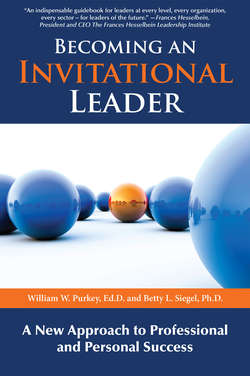Читать книгу Becoming an Invitational Leader - William W Purkey - Страница 15
На сайте Литреса книга снята с продажи.
The Organized Self
ОглавлениеMost researchers agree that a person’s self-concept has a generally stable quality that is characterized by internal orderliness and harmony. It is not simply a hodgepodge of cognitions and feelings. The self-concept is orchestrated and balanced, centered on the “I” that represents immediate awareness of existence. In addition to the “I,” the self-concept contains smaller units. These can be thought of as “sub-selves” and represent the self-as-object. These are the varied multitude of “me’s” that are the objects of our self-perceptions. Each of the “me” sub-selves contains its own balance and voice, and each influences, and is in turn influenced by the global self-concept.
During most of the previous century, self-concept was viewed as a unitary, monolithic entity, usually centered on self-esteem. In contrast, more contemporary thinking sees self-concept as a multifaceted, dynamic, and many-layered construct of amazing complexity. As W. Somerset Maugham noted in his 1940s novel, The Razor’s Edge, many individuals live within us, often in uneasy companionship with one another.
Each person maintains countless perceptions regarding his or her personal existence, and each perception is internally orchestrated with all the others. This is what gives consistency to the human personality. The organized quality of self-concept has corollaries:
Self-concept requires stability and tends to resist change. If the self-concept changed readily, the individual would lack a consistent and dependable personality.
At the heart of self-concept is the self-as-doer, the “I” which is distinct from the self-as-object, the various “me’s.” This allows the person to reflect on past events, analyze present perceptions, and shape future experiences.
The more central a particular belief is within one’s self-concept (the closer the “me” to the “I”) the more resistant the person is to changing that belief.
To picture the global self-concept with its internal symmetry, imagine that a large spiral represents the organized unity of one’s self-concept. The numerous “me” sub-selves can be roughly divided into attributes (strong, tall, loyal, short, bright, young, bashful, friendly, faithful, trustworthy, responsible, loyal, helpful, sexy, etc.) and categories (student, leader, husband, mother, atheist, athlete, spouse, Muslim, Jew, Christian, homosexual, veteran, American, etc.). These perceived attributes and categories are often linked (bright student, loyal American, faithful spouse, responsible administrator, etc.) and are internally positioned in a hierarchical order. This order is critical, for it gives meaning and stability to the self.
Each person’s self-concept contains countless me’s, but not all are equally significant. Some are highly important and are close to the center of the self-concept. Other me’s are less central and are located toward the periphery. The me’s closest to the “I” have the most influence on and authority over daily functioning. In other words, they “have the king’s ear.”
It may also be helpful to think of the self-concept as a stabilizing lake. This lake is constantly fed by a river of experience that flows into the lake at one end and exits at the other. The river of me’s can flow into the self-concept lake rapidly or slowly, depending on life experiences, and can provide much or little fresh water. In the healthy personality, the river dependably provides the lake with a manageable number of fresh me’s, whereas outmoded me’s are flushed out of the lake and down the river. When this life-long process of renewal and development is interrupted, and little water is allowed to enter or leave, the lake becomes stagnant. Conversely, if too much water enters or leaves the lake, it becomes flooded or drained, unpredictable, and provides too little protection against the vagaries of life. When too many me’s strive for attention, the leader can lose self-direction and integrity. Where there are too few me’s, the individual begins to lose his or her identity and even his or her perceived existence.
